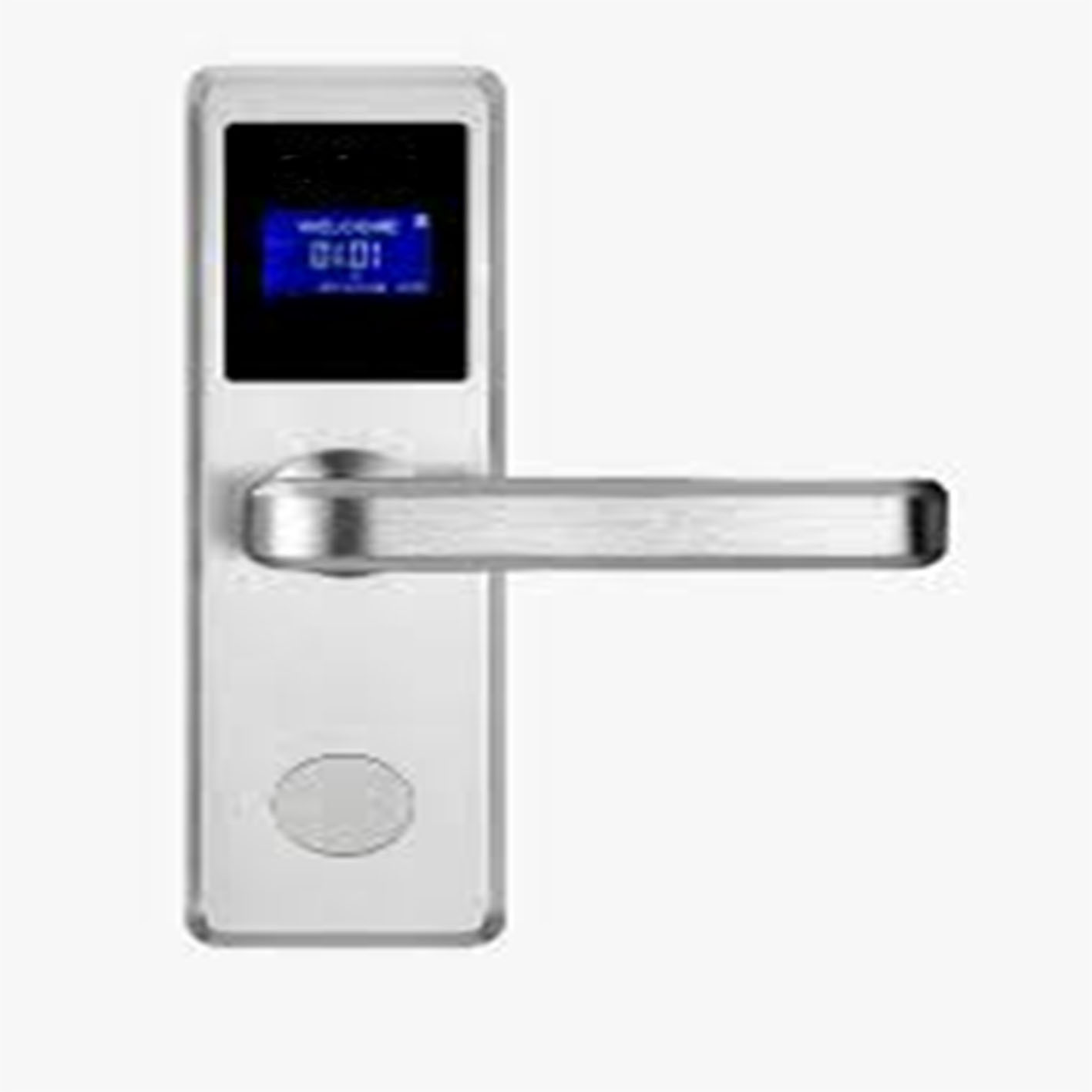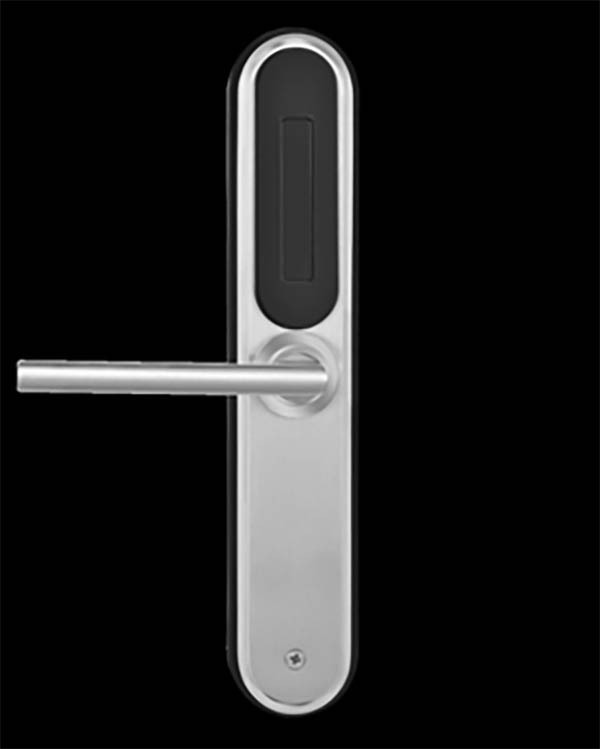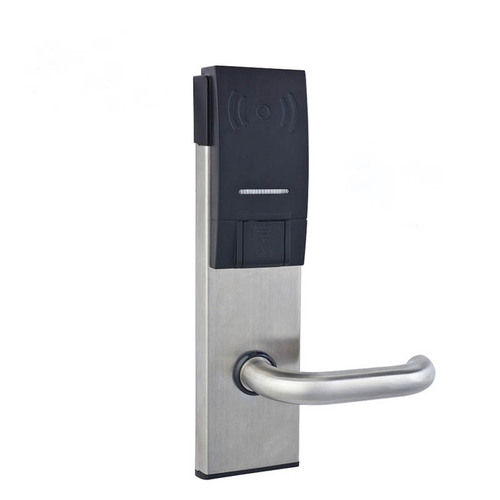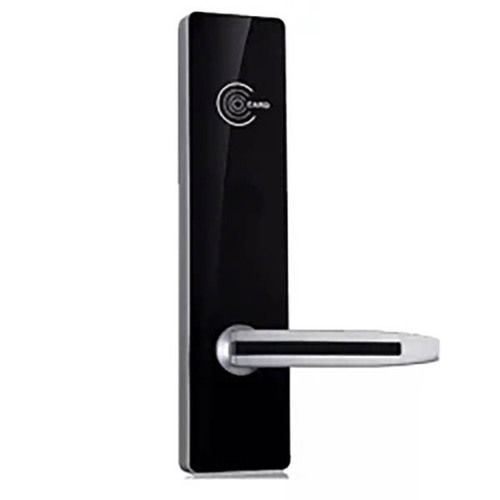RFID Key Card
RFID Key Card Specification
- Size
- 85.5mm x 54mm (standard CR80)
- Unlock Way
- RFID contactless
- Voltage
- 3V
- Water Proof
- Yes
- Lock Housing
- Not applicable (used with compatible locks)
- Finish
- Glossy/Matte
- Suitable For
- Hotels, Offices, Apartments
- Application
- Hotel door lock, Access control
- Power Supply
- Passive, No internal power
- Material
- PVC
RFID Key Card Trade Information
- Minimum Order Quantity
- 1 Piece
- Payment Terms
- Cash Advance (CA), Cash in Advance (CID)
- Main Export Market(s)
- Asia, Australia, Central America, North America, South America, Eastern Europe, Western Europe, Middle East, Africa
- Main Domestic Market
- All India, South India, Central India, West India, North India, East India, Gujarat, Karnataka, Kerala, Lakshadweep, Mizoram, Meghalaya, Manipur, Andhra Pradesh, Bihar, Chandigarh, Daman and Diu, Goa, Jharkhand, Odisha, Punjab, Assam, Delhi, Dadra and Nagar Haveli, Andaman and Nicobar Islands, Arunachal Pradesh, Chhattisgarh, Haryana, Himachal Pradesh, Jammu and Kashmir, Madhya Pradesh, Maharashtra, Nagaland, Rajasthan, Sikkim, Tamil Nadu, Telangana, Tripura, Pondicherry, Uttar Pradesh, Uttarakhand, West Bengal
About RFID Key Card
RFID Card Technical Specifications
RFID cards come in various types, each with specific technical specifications depending on the frequency band they operate in (LF, HF, UHF). Here are the detailed specifications for typical RFID cards:
Low-Frequency (LF) RFID Cards
Frequency: 125 kHz or 134.2 kHz
Range: Up to 10 cm
Data Transfer Rate: 2-4 kbps
Modulation: ASK (Amplitude Shift Keying), FSK (Frequency Shift Keying)
Memory: Typically 64 bytes to 256 bytes
Power Source: Passive (no internal battery, powered by the reader)
Standards: ISO 11784/11785
High-Frequency (HF) RFID Cards
Frequency: 13.56 MHz
Range: Up to 1 meter
Data Transfer Rate: 26-848 kbps
Modulation: ASK, FSK, PSK (Phase Shift Keying)
Memory: 96 bytes to 4 KB (varies by application)
Power Source: Passive
Standards: ISO 14443 (Type A and B), ISO 15693, ISO 18092 (NFC)
Ultra-High-Frequency (UHF) RFID Cards
Frequency: 860-960 MHz (region-specific)
Range: Up to 12 meters or more
Data Transfer Rate: 40-640 kbps
Modulation: ASK, PSK
Memory: Typically 96 bits to 4 KB
Power Source: Passive (some active or semi-passive for extended range)
Standards: ISO 18000-6C (EPC Gen 2)
General Specifications Across Types
Operating Temperature: -25C to 70C (-13F to 158F)
Storage Temperature: -40C to 85C (-40F to 185F)
Dimensions: Standard credit card size (85.6 x 54 mm), thickness around 0.76 mm
Material: PVC, PET, composite materials
Durability: Rated for a certain number of read/write cycles, often in the tens of thousands
Specific Use Cases and Features
- Security: Encryption (AES, DES), mutual authentication
- Compatibility: Depending on the application, certain cards may be designed for compatibility with specific systems or readers.
- Customization: Printable surfaces for logos, information, or additional barcodes/QR codes.
Examples of RFID Cards and Their Specifications
MIFARE Classic (HF)
Frequency: 13.56 MHz
Memory: 1 KB or 4 KB
Communication Speed: 106 kbps
Read Range: Up to 10 cm
Standard: ISO 14443A
Security: Proprietary encryption
HID ProxCard II (LF)
Frequency: 125 kHz
Read Range: Up to 15 cm
Data Capacity: 26 bits
Standard: Proprietary
Security: Basic, suitable for access control
Alien Technology Higgs-3 (UHF)
Frequency: 860-960 MHz
Memory: 96 bits EPC, 512 bits user memory
Read Range: Up to 10 meters or more
Standard: ISO 18000-6C (EPC Gen 2)
Security: Password protection, encrypted communication
RFID Card FAQ
1. What is an RFID card?
An RFID (Radio Frequency Identification) card is a contactless smart card embedded with a microchip and antenna. It uses radio waves to transmit data to an RFID reader, allowing for wireless identification and access control.
2. How does an RFID card work?
RFID cards operate by emitting a radio frequency signal when brought near an RFID reader. The reader captures this signal, reads the unique identifier (UID) stored on the card, and processes it to grant or deny access or perform other functions.
3. What are the types of RFID cards?
- Low-Frequency (LF) Cards: Operate at 125 kHz or 134.2 kHz, typically used for access control and animal identification.
- High-Frequency (HF) Cards: Operate at 13.56 MHz, commonly used in public transport, libraries, and contactless payment systems.
- Ultra-High-Frequency (UHF) Cards: Operate between 860-960 MHz, used in supply chain management and inventory tracking.
4. What are the benefits of RFID cards?
- Convenience: Contactless and quick interaction.
- Security: Harder to duplicate than traditional keys.
- Durability: No wear and tear from physical contact.
- Scalability: Easy to manage for large numbers of users.
- Automation: Streamlines processes like access control and inventory management.
5. Can RFID cards be hacked?
Yes, RFID cards can be vulnerable to cloning, eavesdropping, and relay attacks. However, advanced encryption and secure protocols significantly reduce these risks.
6. How do I protect my RFID card from being hacked?
- Use protective sleeves or wallets: These can block unauthorized scans.
- Enable encryption: Ensure the RFID system uses strong encryption.
- Regularly update security protocols: Keep the system updated with the latest security measures.
7. What is the range of an RFID card?
- LF Cards: Up to 10 cm.
- HF Cards: Up to 1 meter.
- UHF Cards: Up to 12 meters or more.
8. Can RFID cards be used with smartphones?
Yes, many modern smartphones support NFC (Near Field Communication), a subset of RFID technology. This allows smartphones to read and emulate RFID cards, making them useful for access control and contactless payments.
9. How do I encode data on an RFID card?
Encoding data on an RFID card typically involves using an RFID reader/writer device and associated software. The process involves:
- Connecting the reader/writer to a computer.
- Running the encoding software.
- Placing the RFID card on the reader/writer.
- Entering the desired data and writing it to the card.
10. Are there different sizes and shapes of RFID cards?
Yes, while the standard RFID card is the size of a credit card (85.6 x 54 mm), RFID technology can be embedded in various forms, including key fobs, wristbands, and adhesive tags.
11. What are the components of an RFID card?
- Microchip (IC): Stores data and processes information.
- Antenna: Transmits and receives radio signals.
- Substrate: The material housing the microchip and antenna, usually plastic like PVC or PET.
12. What are common applications of RFID cards?
- Access Control: Secure entry to buildings and rooms.
- Public Transportation: Contactless fare payment.
- Retail and Supply Chain: Tracking inventory and streamlining logistics.
- Library Systems: Managing book loans and returns.
- Contactless Payments: Quick and secure transactions.
13. How long do RFID cards last?
RFID cards are durable and can last several years, depending on the environment and usage. Typically, they are rated for tens of thousands of read/write cycles.
14. What are some common standards for RFID cards?
- LF RFID Cards: ISO 11784/11785.
- HF RFID Cards: ISO 14443 (Type A and B), ISO 15693, ISO 18092 (NFC).
- UHF RFID Cards: ISO 18000-6C (EPC Gen 2).
15. What are the privacy concerns with RFID cards?
Privacy concerns include unauthorized tracking and data breaches. Using encryption, protective sleeves, and secure protocols can help mitigate these issues.
Versatile Access Control Solutions
Our RFID key card ensures secure, seamless contactless entry for hotels, office spaces, and apartments. Compatible with a variety of RFID systems, it integrates easily with access control solutions requiring either MIFARE, NFC, or custom chips, covering the 125 kHz and 13.56 MHz frequencies. Its flexibility meets the diverse needs of distributors, retailers, and property managers.
Durable and Customizable Design
Constructed from tough PVC and offered in a choice of glossy or matte finishes, the key card is designed to withstand daily wear, maintaining full functionality in temperatures from -20C to 60C. Robust against water, dust, and scratches, it also features vibrant, customizable full-color printing for branding or identification purposes.
FAQs of RFID Key Card:
Q: How does the RFID key card function for access control systems?
A: The RFID key card operates contactlessly by transferring a unique identification code (UID) and any optional encoded data when held near a compatible reader, triggering door locks and access points without physical contact.Q: What types of applications are suitable for this RFID key card?
A: This card is ideal for hotel door locks, office building access, and apartment complex entry systems. Its also suited for deployment by dealers, wholesalers, and other businesses handling security infrastructure in India.Q: When should I consider customizing my RFID key cards?
A: Customization is best considered when you need branding, color-coding, or identifiable information printed on the cards. Custom printing enhances both the professional appearance and security of your key cards.Q: Where can these RFID cards be integrated and by whom?
A: These cards can be integrated into any access control system that supports 125 kHz or 13.56 MHz frequencies. They are available for purchase and distribution by dealers, importers, exporters, manufacturers, retailers, and suppliers across India.Q: What is the process for using and issuing these RFID key cards?
A: Administrators issue the card to authorized users, who simply tap or hold the card near a reader within 210 cm to gain access. The process is simple and eliminates the need for physical contact or manual swiping.Q: What benefits do these RFID key cards offer compared to traditional keys?
A: They offer increased security, convenience, and durability. Cards are waterproof, dustproof, and scratch-resistant, suitable for repeated use, and support efficient user management without the hassle of lost keys.











Price:
- 50
- 100
- 200
- 250
- 500
- 1000+
More Products in Electronic Door Lock Category
Electronic Smart Card Door Locks
Price 5500 INR / Inch
Minimum Order Quantity : 1 Piece
Material : SS
Battery : 4
Unlock Way : Card
Warranty : 5 year
Electronic Door Lock
Price 3500 INR / Box
Minimum Order Quantity : 10 Pieces
Material : SS
Battery : 6V AA alkaline batteries
Unlock Way : Card, password, Key
Warranty : 1 to 5 year
Electronic Hotel Room Door Locks
Price 7203 INR
Minimum Order Quantity : 10 Pieces
Material : SS
Battery : 6V AA alkaline batteries
Unlock Way : Card, password, Key
Warranty : 1 to 5 year
Electronic RFID Door Lock
Price 995.0 INR / Number
Minimum Order Quantity : 1 Piece
Material : SS
Battery : 4pcs 1.5V alkaline batteries
Unlock Way : Card, password, Key
Warranty : 1 year

 Send Inquiry
Send Inquiry






 Send Inquiry
Send Inquiry Send SMS
Send SMS